GRAFENWOEHR, Germany - The German Army honored the 100th birthday of the Grafenwoehr Training Area with a Grand Tatoo ceremony on the Grafenwoehr parade field, June 30.
Against the backdrop of the Grafenwoehr Water Tower, the German Bundeswehr stood as a visual representation of the long history of training and discipline. The band marched and played their instruments. The torches were brilliant against the night sky, as the sounds of horns and flutes filled the evening air.
Usually reserved for special occasions, the ceremony is only performed for national celebrations and solemn public ceremonies, or to honor distinguished persons. Normally taking place in the evening hours, the Zapfenstreich consists of a military formation, including a military band, two platoons of armed infantrymen, and two lines of soldiers carrying torches.
Underlining the importance of the event, there were many dignitaries in attendance. The Honorable Greg Delawie, U.S Deputy Chief of Mission in Germany, and the Honorable Brigitta Brunner, Southern Germany Government President of the Government of the Oberpfalz, delivered speeches that highlighted the great partnership and cooperation between the U.S. and German military in Bavaria.
"We count the American Soldiers and families as friends," said Brunner.
Brunner said trust has grown between the two militaries, since 1945, when the American came here during the war.
"Partnerships between military units, but also personal friendships, have developed over decades. And this has strengthened mutual trust of one another," said Brunner. "Security in the 21st century must be seen as comprehensive and as a task for our, and future generations."
According to German historical records, the Grosser Zapfenstreich ("Grand Tattoo") originated as a simple blast of a trumpet to signal the end of selling alcohol in military quarters to prepare for lights out. The unit sergeant major would walk across the military camp and hit - "streichen" in Old German - the taps of the casks with a stick. The english "tattoo" is derived from the Dutch phrase "tap toe,"meaning "to strike the tap."
"The name Zapfenstreich comes from the middle ages because there was a certain time that they had to stop giving out, or bringing out, beer," said Sgt. Maj. Dertrhold Pott, a Bundeswehr soldier of Company D, at the Noncommissioned Officer Academy in Weiden, Germany. "So, the instrument you open to pour-out beer is called Zapfen. And it is called Zapfenstreich-end of giving out beverages."
Upon hearing the lilting melody of the flute and the beating of the drums, signaling the progression of Soldiers from the 472nd Logistics Battalion, stationed in Kuemmersbruck, Germany, the reviewing party took their place on the field. The German Army Mountain Music Corps Garmisch-Partenkirchen played a moonlight serenade to the crowds of American and German spectators, as the lit torches, held by the Soldiers, bounced to the beat of the drum, as they took to the field.
With the Grafenwoehr Water Tower illuminated in the background, Lt. Col. Georg Schrieglmann, commander of troops, shouted out commands. In the dancing light of a multitude of torches, the Soldiers maneuvered around the field with precise movements borne of their ancestors in the sixteenth century.
Like its American counterpart, the military tattoo, the Zapfenstreich ceremony represents the end of the duty-day.
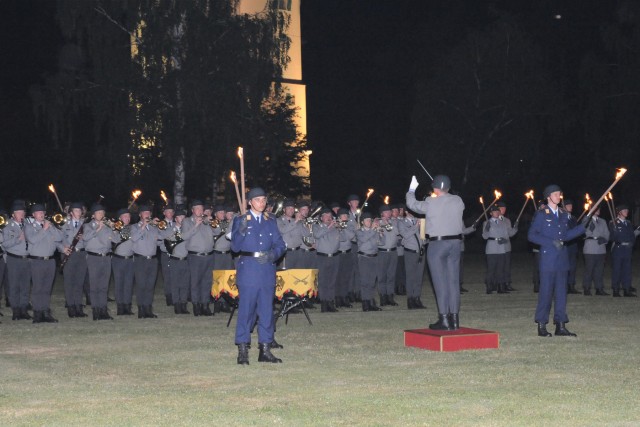
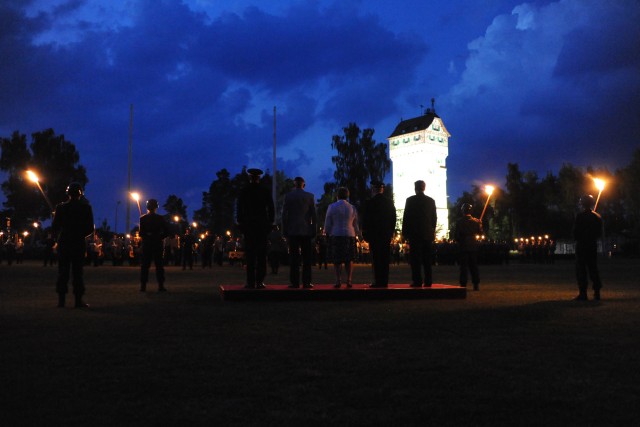
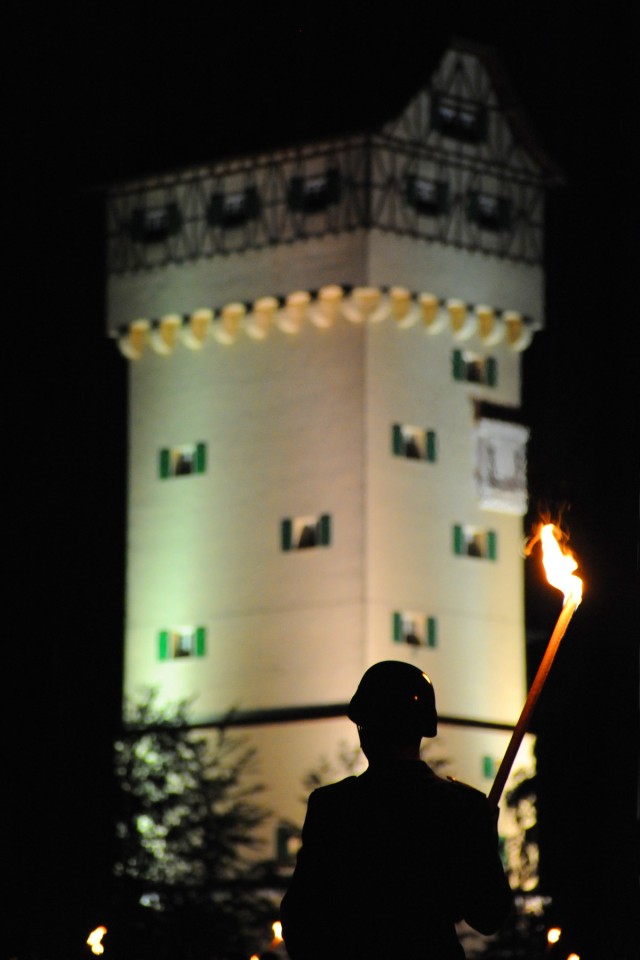
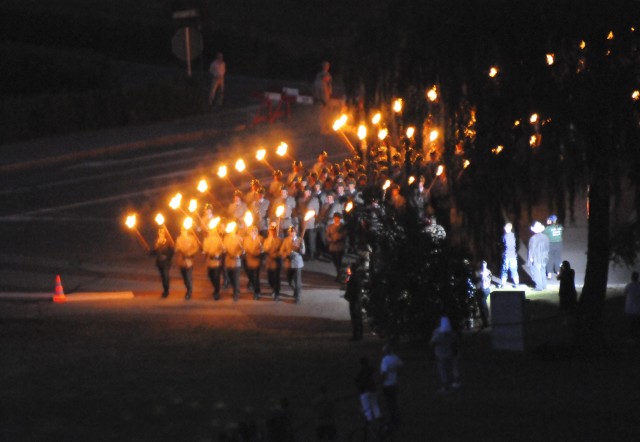
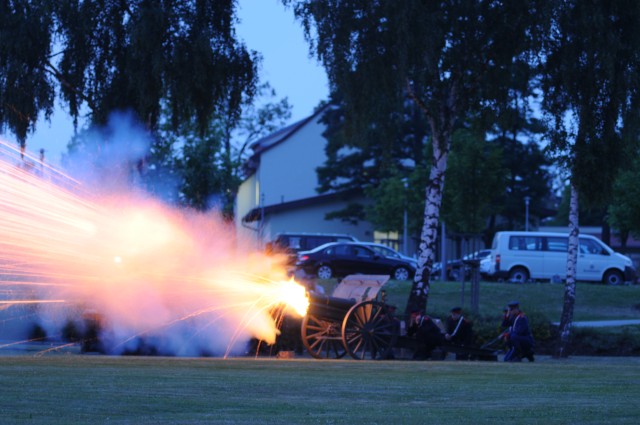
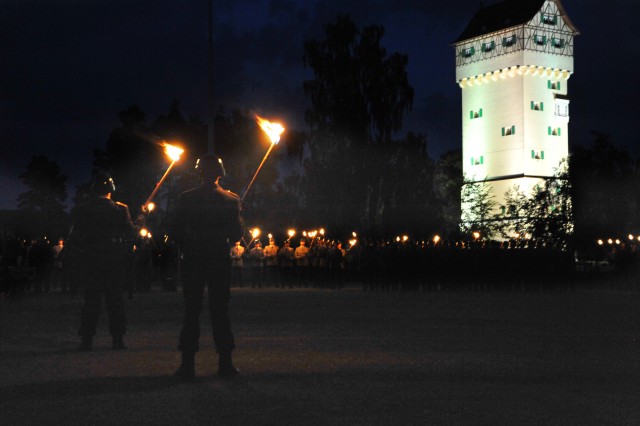
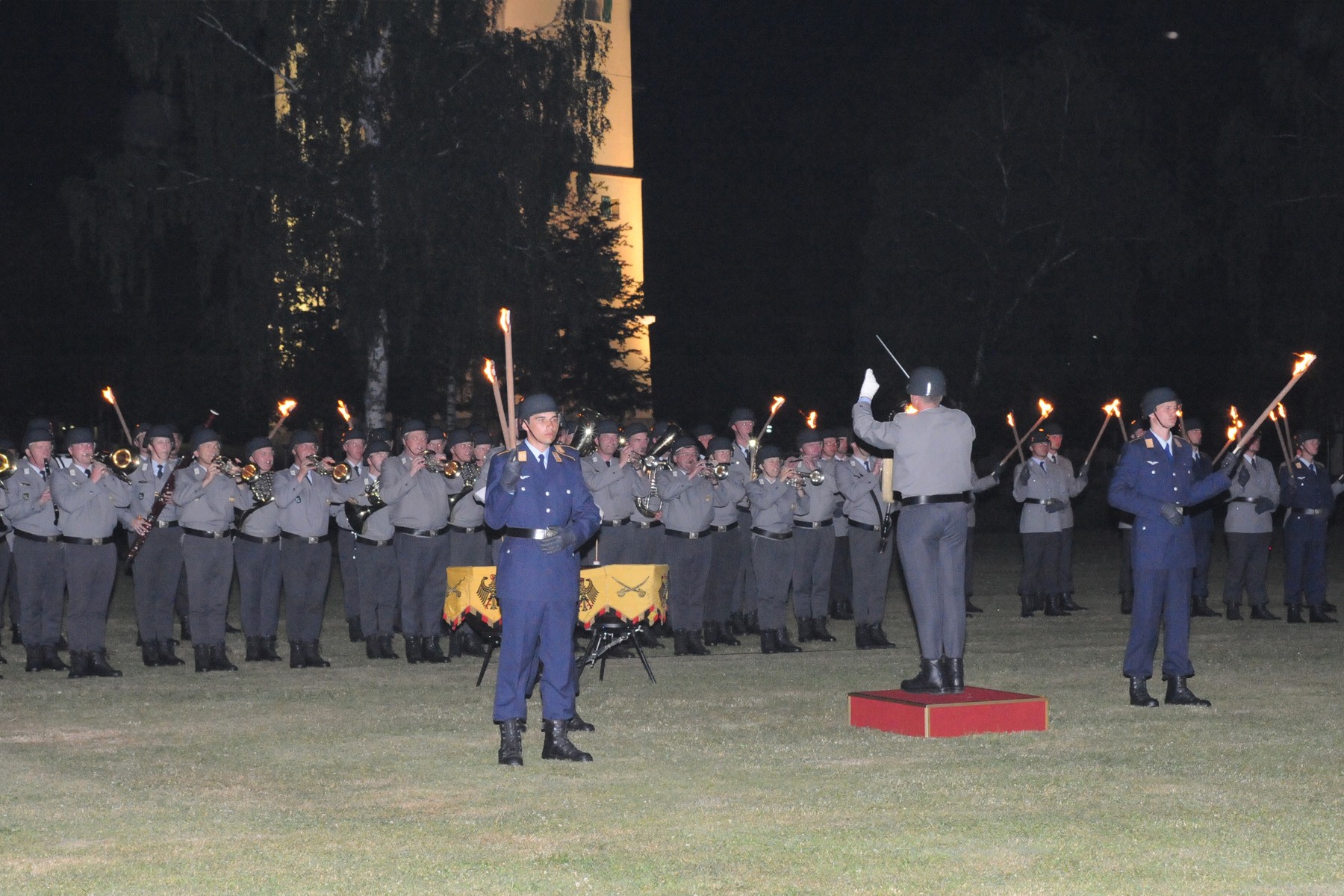
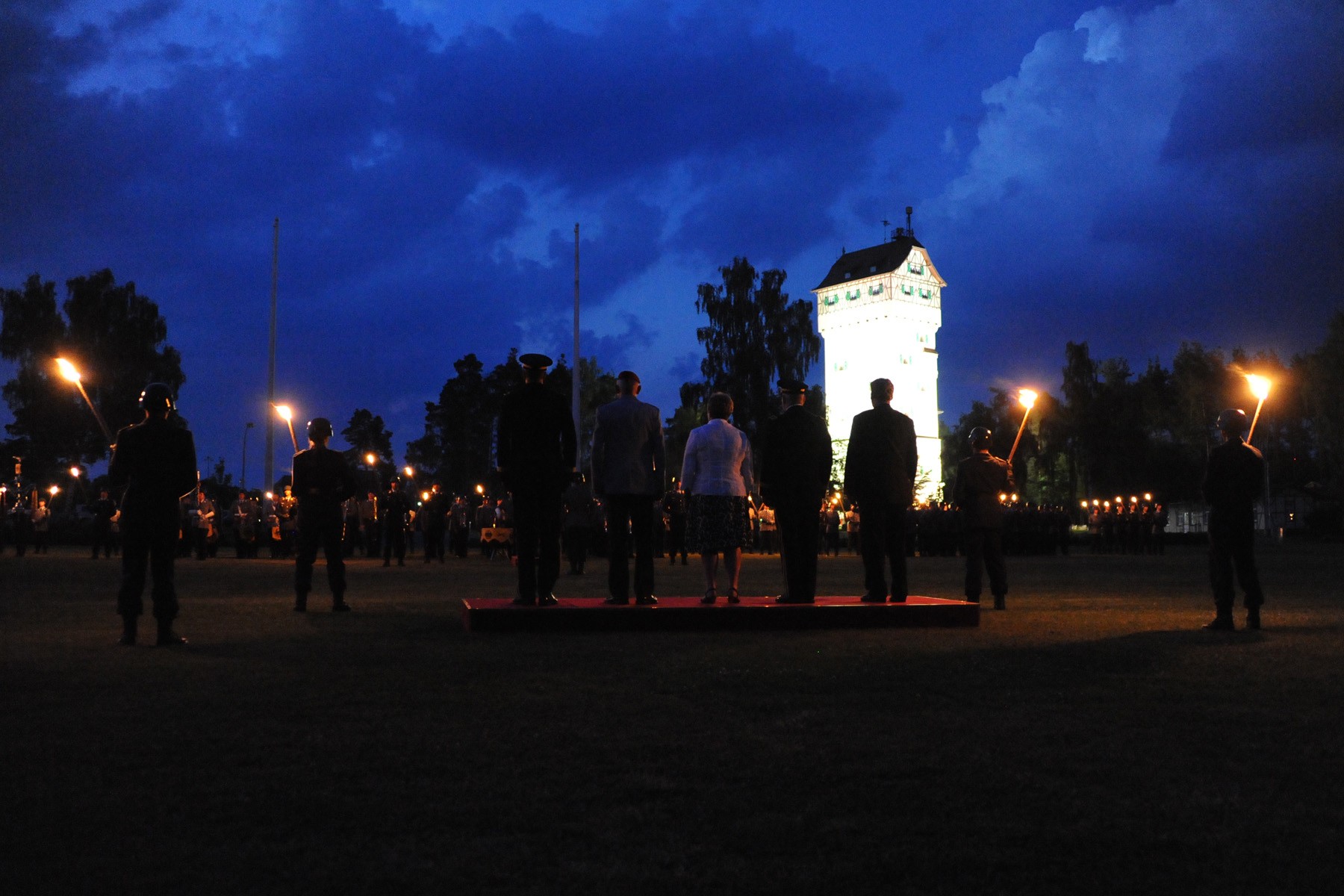
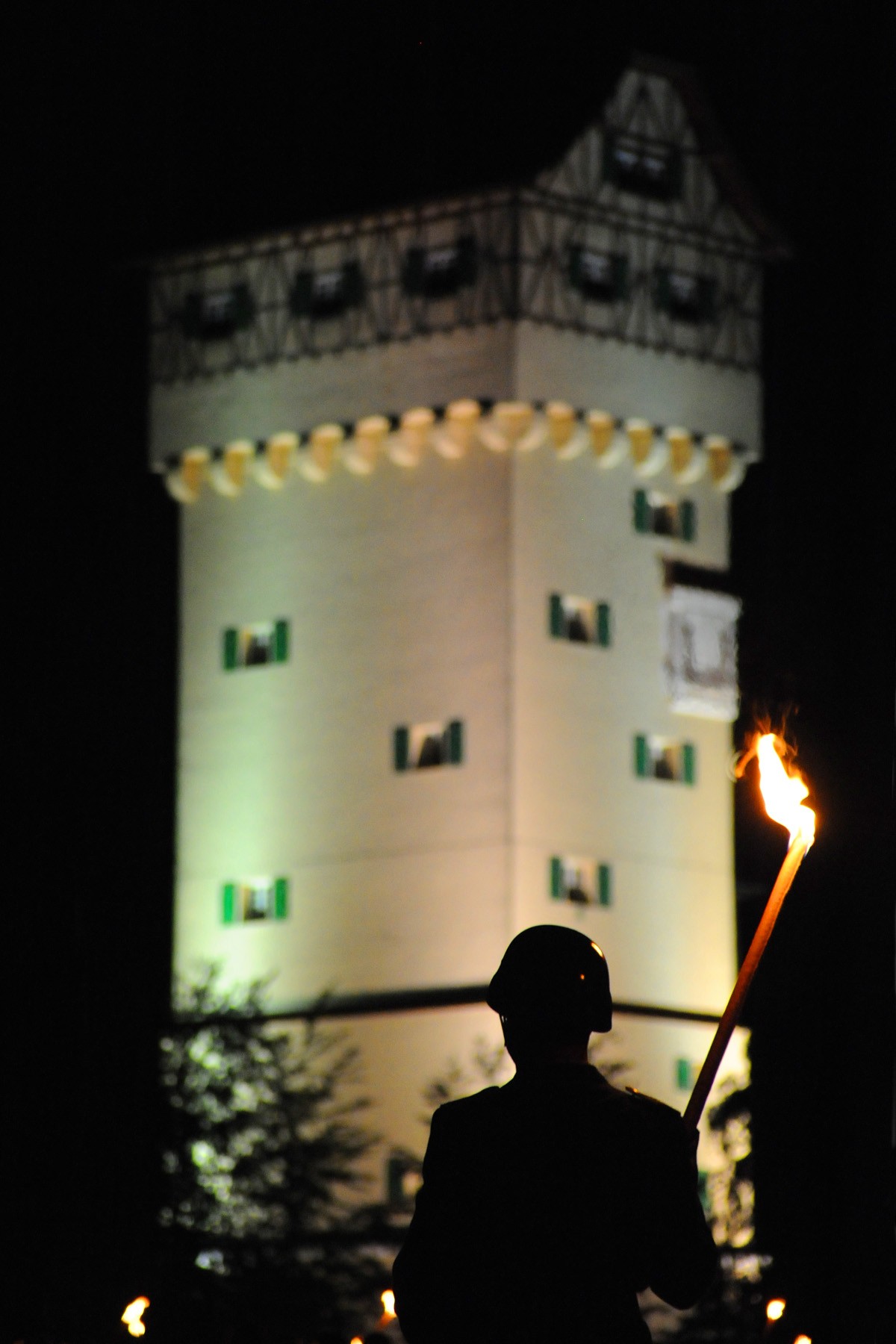
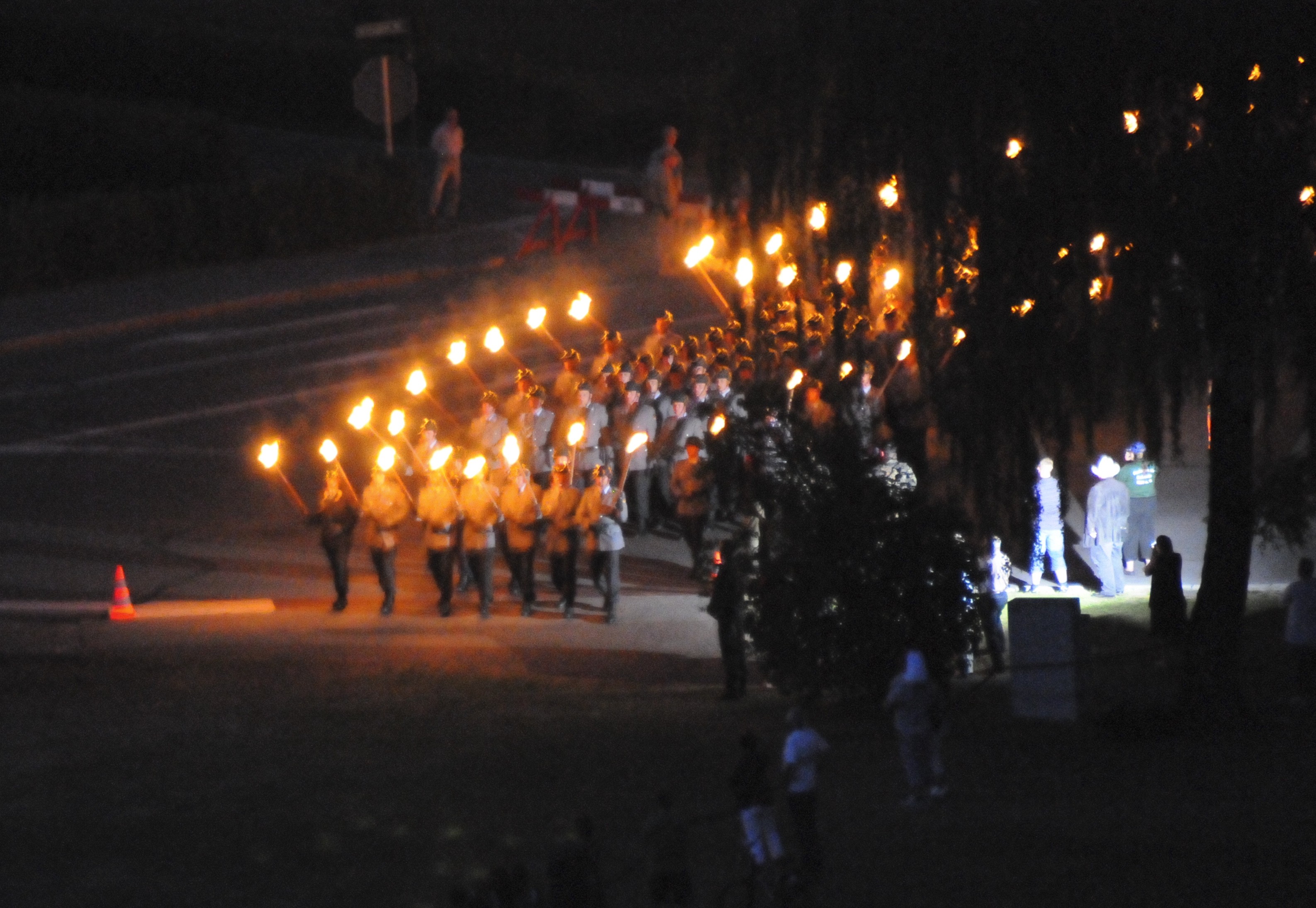
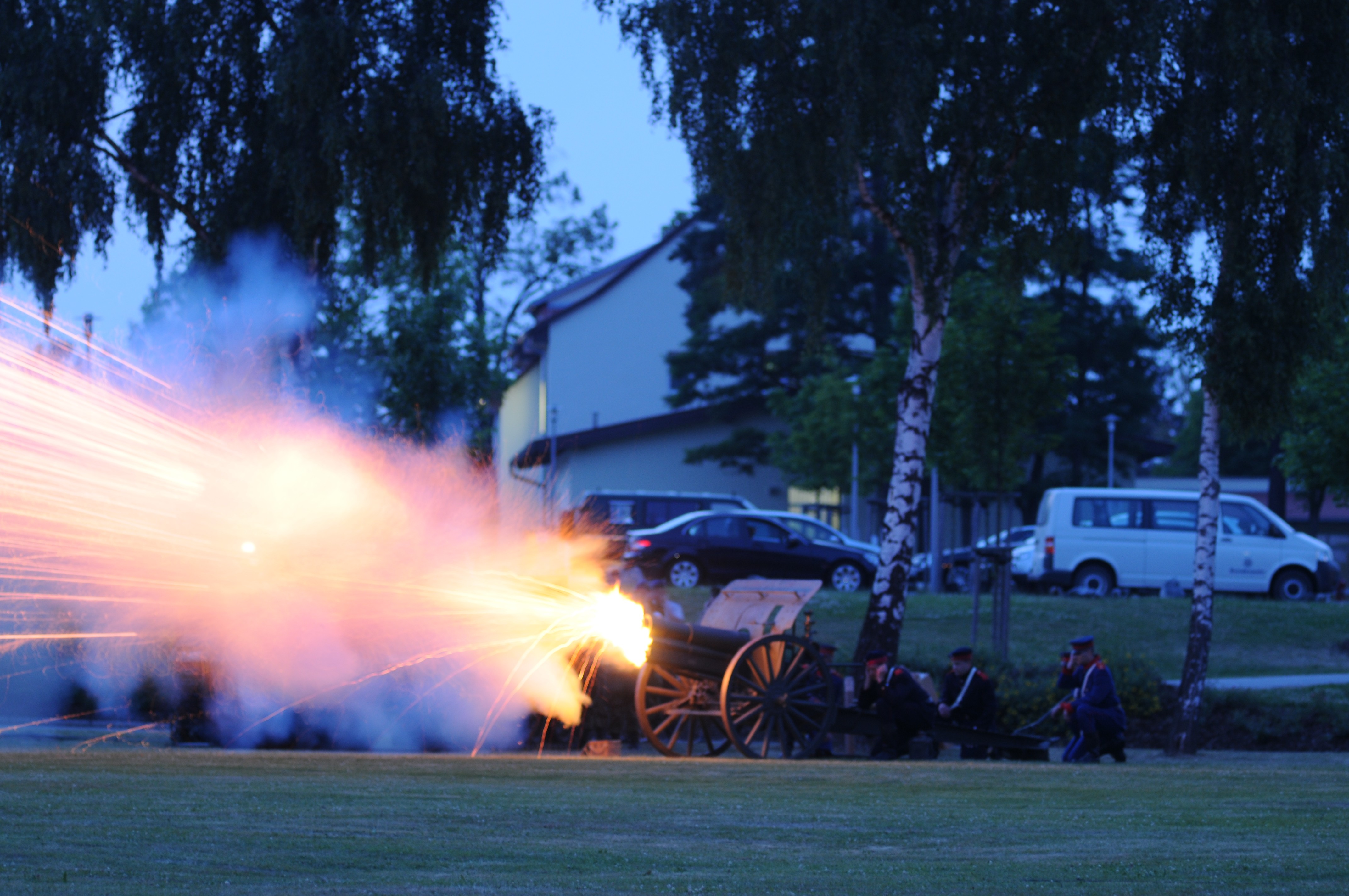
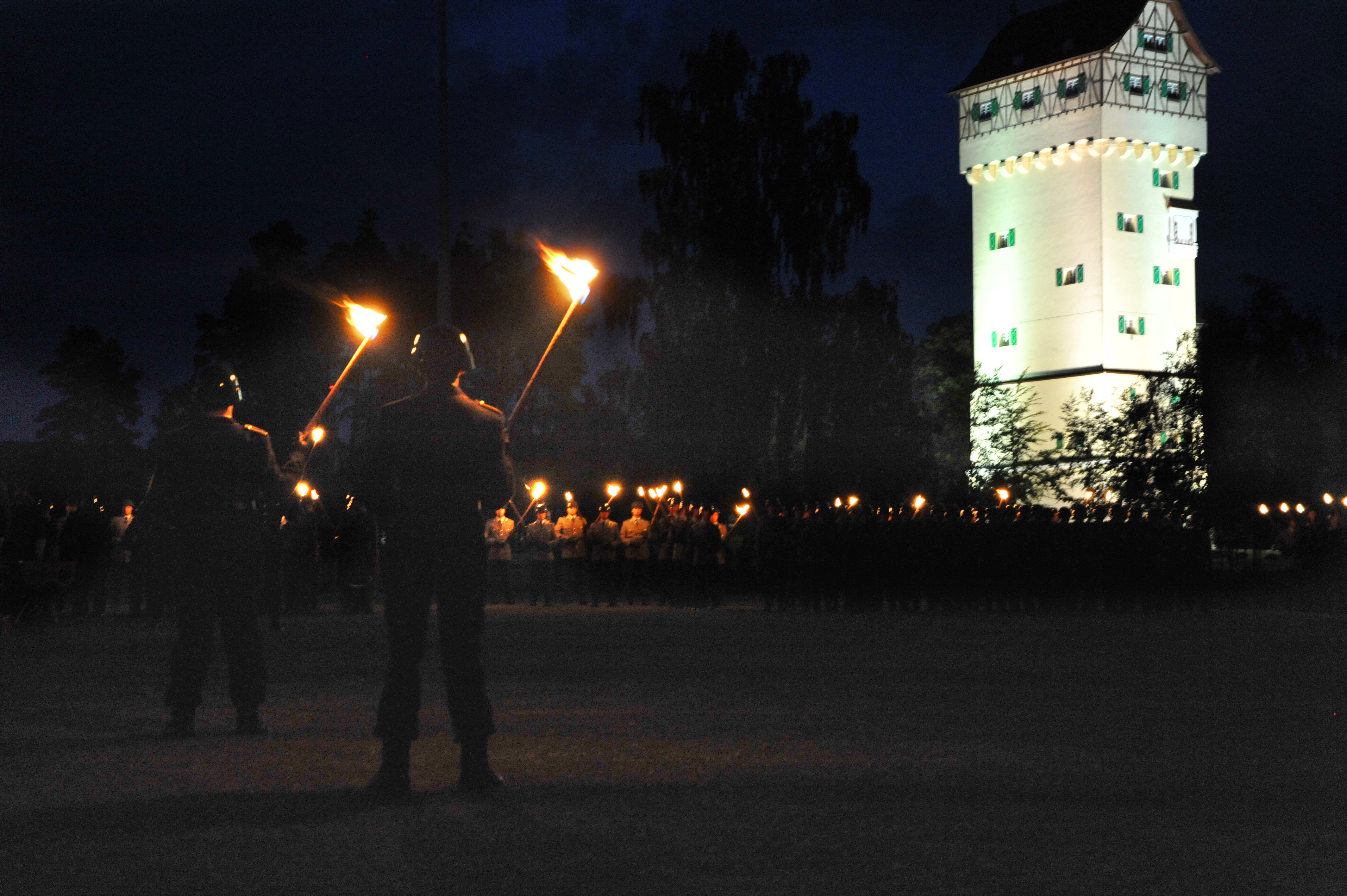
Social Sharing